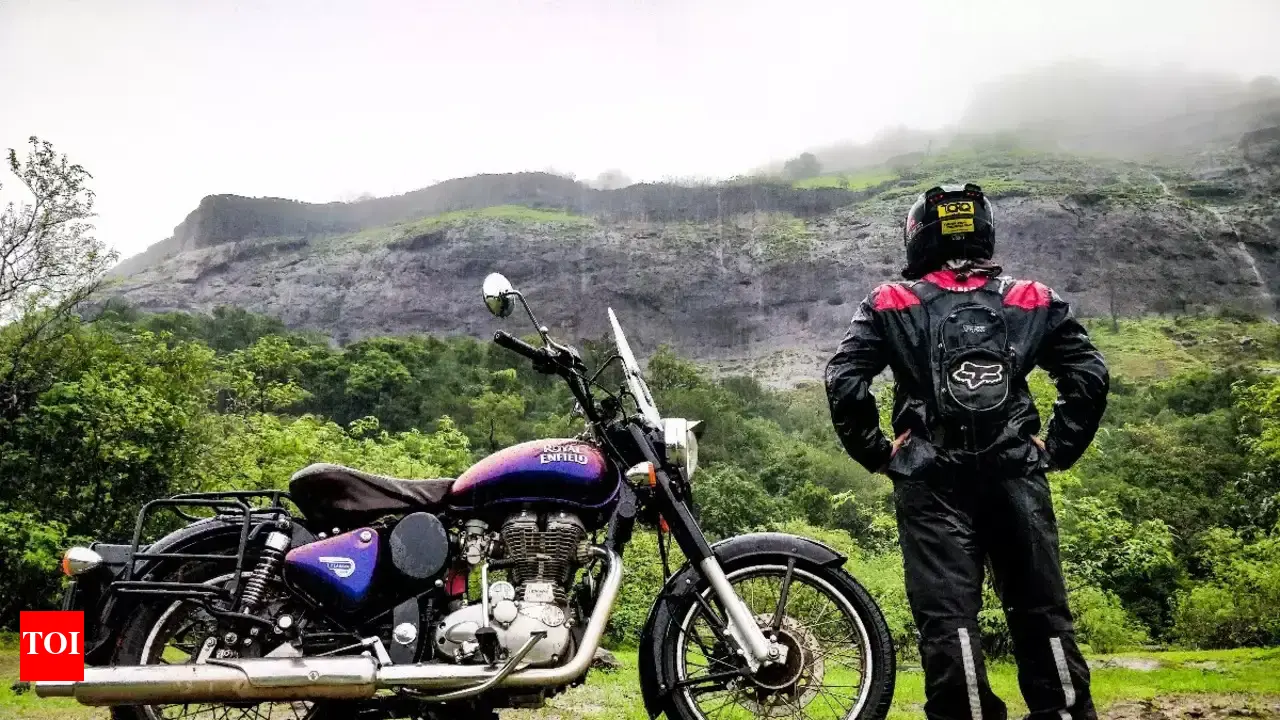Introduction: Why Motorcycle Travel is an Adventure Like No Other
There’s something incredibly freeing about traveling on a motorcycle. The wind in your face, the open road ahead, and the sense of adventure that comes with it. For many riders, a long-distance motorcycle journey is the epitome of freedom and exploration. However, as thrilling as it is, motorcycle travel requires careful planning, preparation, and knowledge to ensure safety and enjoyment.
Whether you’re a seasoned biker or a beginner, following the right tips can elevate your ride from a simple trip to a memorable adventure. In this guide, we’ll cover essential motorcycle travel tips that every rider should know to make their journey smoother, safer, and more enjoyable. From packing the right gear to mastering riding techniques, these tips will help you ride smart and stay safe on the open road.
1. Pre-Ride Preparations: Get Your Bike Ready for the Road
Before you hit the road, it’s essential to prepare your motorcycle for the journey. A well-maintained bike ensures that you won’t run into problems while on the move.
- Check Tire Pressure and Condition: Tires are your only contact with the road, so make sure they’re in good condition. Inspect the tread and check tire pressure. Under-inflated tires can cause poor handling, while over-inflated tires can result in a rough ride.
- Oil and Fluids Check: Ensure your bike’s oil is clean and at the proper level. Check the coolant, brake fluid, and chain tension. Low fluids or worn-out chains can cause your bike to perform poorly and may even lead to breakdowns.
- Brakes and Lights: Safety is paramount, so test your brakes and ensure both front and rear brakes are functioning well. Check that your lights, including indicators and headlights, are working properly. You need to be visible to other drivers, especially in low-light conditions.
- Tools and Spares: Carry a basic tool kit for emergencies. Include items like a tire repair kit, spare fuses, and a multi-tool. These simple items can help you fix minor issues on the go.
2. Packing Smart: Essentials You Can’t Forget
When it comes to motorcycle travel, packing efficiently is crucial. You need to strike a balance between bringing enough supplies and not overloading your bike.
- Luggage Options: Invest in durable saddlebags, tank bags, or panniers. Waterproof options are especially important in case of rain. Ensure your luggage is securely fastened and doesn’t interfere with your ability to ride safely.
- Clothing: Pack lightweight, breathable clothing for warm weather, and layers for colder conditions. A good rule of thumb is to pack versatile clothing that you can mix and match. Don’t forget riding gear, including a high-quality jacket, gloves, pants, and boots for protection.
- Hydration and Snacks: Keep a water bottle and some easy-to-carry snacks like granola bars or trail mix. Staying hydrated and nourished on long rides is essential for maintaining energy and focus.
- First-Aid Kit: Accidents can happen, and it’s always a good idea to have a small first-aid kit packed with bandages, antiseptic wipes, pain relievers, and any medications you may need.
- Tech Essentials: Bring a GPS device or a smartphone with offline maps in case you lose signal. Power banks for charging electronics and a camera to capture your adventure can also be useful.
3. Plan Your Route: Know Your Journey, Avoid Surprises
One of the most exciting aspects of motorcycle travel is the freedom to explore new routes. However, spontaneous adventures should still be tempered with proper planning.
- Route Research: Use apps like Google Maps, RideWithGPS, or motorcycle-specific apps like Rever to research your route in advance. Look for scenic roads, but also check for areas where gas stations, food, and accommodations are readily available.
- Weather Considerations: Weather can change quickly, so keep an eye on the forecast. Riding in rain or extreme temperatures can be challenging, so adjust your route accordingly and be prepared for any weather conditions.
- Rest Stops: Plan regular rest stops to stretch your legs and give your body a break. The open road can be mesmerizing, but staying on the bike for long periods without breaks can lead to fatigue and discomfort.
4. Gear Up: The Right Protective Equipment is a Must
Safety should always come first when riding. Proper gear can protect you in the event of an accident, and also make your ride more comfortable.
- Helmet: A high-quality helmet is non-negotiable. Full-face helmets provide the best protection, but modular or open-face helmets can also be comfortable for short trips. Look for helmets that meet safety standards and offer good ventilation.
- Jacket, Pants, and Gloves: Leather or textile jackets and pants with built-in armor offer protection against abrasions in case of a fall. Gloves protect your hands and offer better grip, making them essential for long rides.
- Boots: Sturdy, ankle-supporting boots are essential for protecting your feet and ankles from impact and road debris.
- Rain Gear: Don’t let unexpected weather ruin your ride. Pack waterproof gear or invest in a rain suit that can be worn over your riding clothes. This keeps you dry and warm, no matter the conditions.
5. Riding Techniques: Master the Skills for Safety and Comfort
Mastering your motorcycle riding technique is critical, especially on long journeys. These tips will help you ride smart and stay safe.

- Keep a Safe Following Distance: Always maintain a safe distance between your bike and other vehicles, especially in heavy traffic. This gives you enough time to react if the vehicle in front of you suddenly stops.
- Practice Cornering: Inexperienced riders often struggle with corners. Learn how to lean into curves and throttle smoothly for better control. Start practicing in low-traffic areas before hitting twisty mountain roads.
- Use Your Body: Your body position plays a significant role in your bike’s handling. Shift your weight when turning, and stay relaxed to avoid fatigue.
- Ride Defensively: Always be aware of your surroundings. Expect the unexpected, especially in busy cities or rural areas where animals or debris might be on the road.
6. Managing Fatigue: Stay Alert on the Road
Riding for extended periods can be physically and mentally exhausting. Here are some strategies to stay fresh:
- Take Frequent Breaks: A 10-15 minute break every hour can help keep your mind sharp and prevent discomfort. Use this time to hydrate, stretch, and clear your mind.
- Stay Hydrated: Dehydration can lead to fatigue and make it harder to concentrate. Drink plenty of water, and avoid too much caffeine, as it can lead to crashes in energy.
- Rest Well: A good night’s sleep is essential for maintaining energy levels. Plan your trip to include rest days, and never ride when you’re feeling overly tired.
7. Be Prepared for Emergencies: Know What to Do in Case of Trouble
Emergencies can happen at any time. It’s essential to know how to handle common issues that may arise on the road.
- Flat Tires: Carry a tire repair kit with you, including a pump and tire patches. Knowing how to fix a flat can save you time and stress.
- Breakdowns: If your bike breaks down, pull over to a safe location and assess the situation. Having a tool kit with basic tools can help you address minor mechanical issues. If the problem is beyond your ability to fix, contact roadside assistance.
- Accidents: In the unfortunate event of an accident, stay calm and assess your injuries. Call emergency services immediately if needed and make sure to exchange details with any other parties involved.
8. Enjoy the Ride: Embrace the Journey
Motorcycle travel isn’t just about reaching your destination—it’s about the experience along the way. Embrace the freedom of the open road and the joy of discovering new places. Stop and take in the sights, explore hidden gems, and meet fellow bikers who share your passion for riding.
Conclusion: Ride Smart, Ride Safe
Motorcycle travel is one of the most rewarding ways to explore the world, but it requires preparation, awareness, and the right mindset. By following these essential tips, you’ll ensure that your journey is safe, comfortable, and unforgettable.
Remember, a successful trip starts before you hit the road—preparing your bike, packing smart, and getting the right gear are just the beginning. With a little planning and some key riding techniques, you can ride smart and have the adventure of a lifetime.


